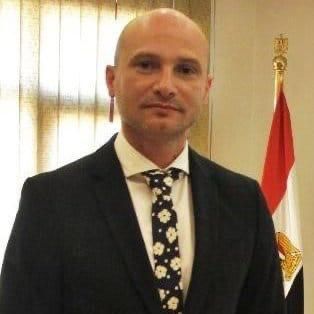العمل الإنساني في ظل القيود السياسيه و التحولات الاعلاميه
Humanitarian Work Amid Political Constraints and Media Transformations

BY: DR.ramy Elnazer
Expert in humanitarian affair
Over the past decades, the world has witnessed radical transformations in addressing humanitarian issues, particularly during wars and armed conflicts. The challenges facing humanitarian work have escalated noticeably due to geopolitical changes and shrinking operational spaces for humanitarian institutions, while new roles have emerged for other players such as social media influencers.
Humanitarian institutions have always been key players in alleviating the suffering of civilians during wars. Organizations like the International federation of Red Cross and red crescent societies , UNHCR, and the World Food Programme have worked to provide food, medicine, and shelter in the direst of circumstances. These institutions also documented human rights violations and offered safe havens to displaced populations, striving to protect human dignity and basic rights.
Global political shifts, especially after the second decade of the millennium, have imposed increasing restrictions on humanitarian organizations. Many states began to view these organizations with suspicion, accusing them of infringing on sovereignty or political bias. As a result, many humanitarian activities became aligned with donor countries’ interests, thereby reducing the independence and effectiveness of field operations.
Geopolitical transformations have greatly limited humanitarian efforts. Conflict zones have become closed areas with restricted access. Many crises are now subject to media censorship and selective international attention, where intervention priorities are often driven by political agendas rather than actual humanitarian needs.
Amidst these challenges, social media influencers have emerged as a new tool to convey humanitarian messages. However, their roles vary. While some have effectively spotlighted forgotten or marginalized crises, others have exploited these issues to build personal fame. The effectiveness of influencers depends on their credibility and true connection to the cause, not merely their number of followers.
Presenting humanitarian issues should respect the dignity of victims, avoiding emotional exploitation or shocking imagery. Successful models have emerged that tell human stories in a visually ethical and respectful manner, blending information with motivational calls to action. This marks an evolution in how humanitarian narratives are responsibly delivered to the public.
When influencers act with awareness and responsibility, their impact can exceed that of official institutions. They can mobilize donations, inspire volunteers, pressure governments, and shift public discourse around a cause. However, to do this effectively, influencers must be well-informed and rely on credible sources to ensure their messages support truth rather than misinformation or stereotypes.
The ‘Freedom Flotillas’ to Gaza represent a significant example of what grassroots initiatives can achieve outside formal institutions. Despite facing blockade and obstruction, these missions succeeded in drawing global attention to the catastrophic humanitarian situation in Gaza. They exposed international silence and revived transnational solidarity. These community-led efforts managed to send a powerful message despite limited resources, encouraging new creative models for advocacy outside traditional institutional frameworks.
Conclusion
Humanitarian work stands today at a crossroads. Between institutions constrained by political pressure and influencers capable of rapid, direct mobilization—albeit with varying credibility—a third model is needed. This model must combine professionalism, authenticity, and grassroots spirit. For such a model to succeed, we must redefine the role of humanitarian actors and empower communities to defend their causes using innovative tools that reflect realities on the ground, not the agendas of financiers.




